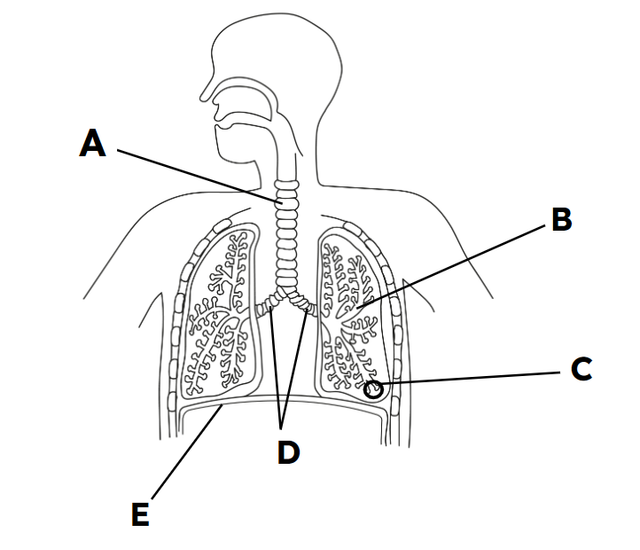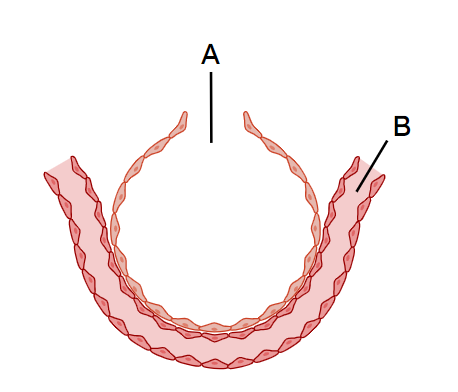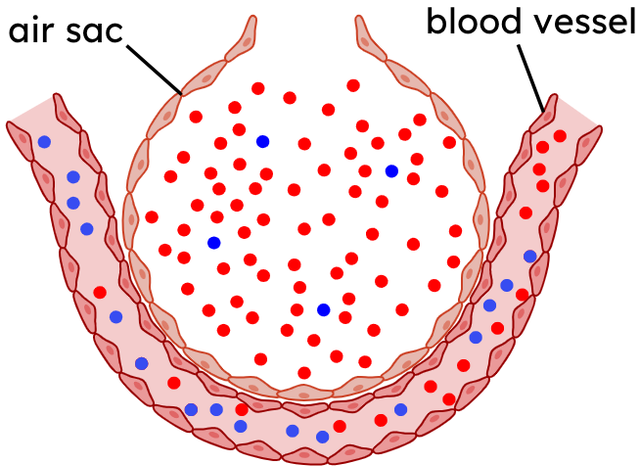Myths about teaching can hold you back
- Year 9
Adaptations of the human lungs for gas exchange
I can describe how the human lungs are adapted to increase the amount of gas exchange.
- Year 9
Adaptations of the human lungs for gas exchange
I can describe how the human lungs are adapted to increase the amount of gas exchange.
These resources will be removed by end of Summer Term 2025.
Switch to our new teaching resources now - designed by teachers and leading subject experts, and tested in classrooms.
These resources were created for remote use during the pandemic and are not designed for classroom teaching.
Lesson details
Key learning points
- The lungs are made up of tiny air sacs called alveoli.
- Gas exchange takes place between air in alveoli and blood in capillaries.
- There are millions of alveoli to increase the surface area of the lungs for gas exchange.
- The walls of the alveoli are one cell thick to create a short diffusion distance for gas exchange.
- The alveoli are surrounded by capillaries carrying blood, to maintain a concentration gradient for gas exchange.
Keywords
Alveoli - Alveoli are tiny air sacs in the lungs that carry out gas exchange.
Capillary - A capillary is a narrow blood vessel that allows the exchange of substances between tissues and blood.
Diffusion - The movement of particles from a high concentration to a low concentration is known as diffusion.
Surface area - Surface area is the total area of all the exposed surfaces of an object.
Common misconception
Pupils often refer to the walls of the alveoli as "cell walls".
This lesson makes the scale of different parts of the gas exchange system clear (e.g. whether a structure is a tissue or cell).
To help you plan your year 9 science lesson on: Adaptations of the human lungs for gas exchange, download all teaching resources for free and adapt to suit your pupils' needs...
To help you plan your year 9 science lesson on: Adaptations of the human lungs for gas exchange, download all teaching resources for free and adapt to suit your pupils' needs.
The starter quiz will activate and check your pupils' prior knowledge, with versions available both with and without answers in PDF format.
We use learning cycles to break down learning into key concepts or ideas linked to the learning outcome. Each learning cycle features explanations with checks for understanding and practice tasks with feedback. All of this is found in our slide decks, ready for you to download and edit. The practice tasks are also available as printable worksheets and some lessons have additional materials with extra material you might need for teaching the lesson.
The assessment exit quiz will test your pupils' understanding of the key learning points.
Our video is a tool for planning, showing how other teachers might teach the lesson, offering helpful tips, modelled explanations and inspiration for your own delivery in the classroom. Plus, you can set it as homework or revision for pupils and keep their learning on track by sharing an online pupil version of this lesson.
Explore more key stage 3 science lessons from the Breathing and respiration unit, dive into the full secondary science curriculum, or learn more about lesson planning.

Equipment
Licence
Prior knowledge starter quiz
6 Questions
Q1.Select the option which correctly finishes the sentence: Gas exchange is the process of…
Q2.The diagram shows the human gas exchange system. Which letter on the diagram represents the bronchioles?

Q3.The diagram shows the human gas exchange system. Which letter on the diagram represents the alveoli?

Q4.A is a group of cells working together to perform a specific function.
Q5.In diffusion, the net movement of particles is...
Q6.Which of the following are features of diffusion?
Assessment exit quiz
6 Questions
Q1.The diagram shows two structures in the lungs. What is the name of structure A in the diagram?

Q2.What type of blood vessel is labelled B?

Q3.What level of organisation are alveoli?
Q4.There are many alveoli in the lungs in order to increase the area of the lungs.
Q5.Select the option which correctly finishes the sentence: the walls of the alveoli are one cell thick in order to…
Q6.Match the adaptation to its property.

creates a short diffusion distance.
provides a large surface area for diffusion.
maintains a concentration gradient of gases.


